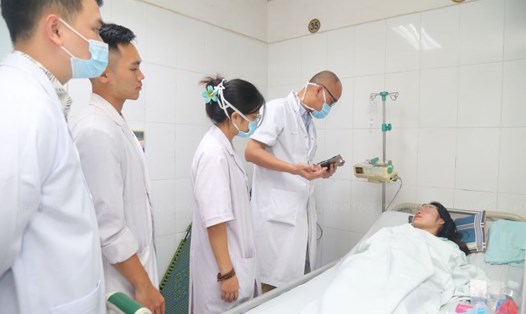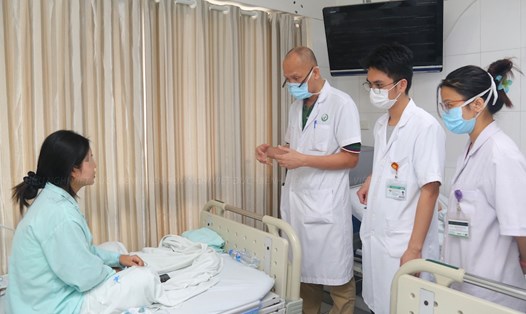At the Emergency Department, doctors checked vital signs and found low blood pressure and inadequate blood oxygen saturation. The patient was immediately diagnosed with grade III anaphylaxis to Lidocaine and was treated simultaneously with both anaphylaxis and local anesthetic poisoning protocols, using vasopressor adrenaline and 20% lipid emulsion along with other emergency resuscitation measures.
After the patient's condition was temporarily stable, the patient was transferred to the Department of Internal Medicine and Anti-Poison Resuscitation, Resuscitation Center, 108 Central Military Hospital for continued monitoring and treatment.
During treatment, the patient developed severe multi-organ damage (respiratory, myocardial, liver, coagulation disorder), requiring a combination of vasopressors with increasing doses, with a high risk of death. The patient received intensive resuscitation, invasive mechanical ventilation, continuous hemofiltration combined with vasopressors and 20% lipid emulsion.
After 3 days of treatment, the patient's condition improved, the endotracheal tube was removed, and he was switched to oxygen therapy with a pair of glasses; the dose of vasopressors was gradually reduced and vasopressors were completely stopped after 5 days. The patient was completely conscious, the damaged organs recovered and he was discharged after 7 days of treatment.
Doctor Nguyen Tien Son - Emergency Department, 108 Military Central Hospital - said: "In the above case, the patient was fortunate to receive proper, timely and active emergency care, avoiding unfortunate consequences. Therefore, when people have beauty needs, they should choose reputable cosmetic facilities licensed by the Ministry of Health and have a team of experienced anesthesiologists and resuscitation specialists, and need to equip themselves with basic knowledge about the signs of anaphylaxis to anesthetics."
Medical facilities have recently recorded many cases of cosmetic complications due to the consequences of these "underground" spas, mostly due to the psychology of wanting cheap prices, believing in "sweet" enticements online and then "losing money and getting sick". Among patients admitted to the hospital with complications after cosmetic procedures, complications due to filler injections account for a relatively large number, Dr. Son shared.
Anaphylaxis during anesthesia and surgical anesthesia is often difficult to diagnose because the patient has been anesthetized and sedated and skin symptoms may not appear, so subjective signs cannot be assessed. Therefore, it is necessary to carefully exploit the history of allergies before performing anesthesia and surgical anesthesia and carefully assess symptoms such as hypotension, decreased blood oxygen levels, rapid pulse, new wheezing, and changes on the monitor.









